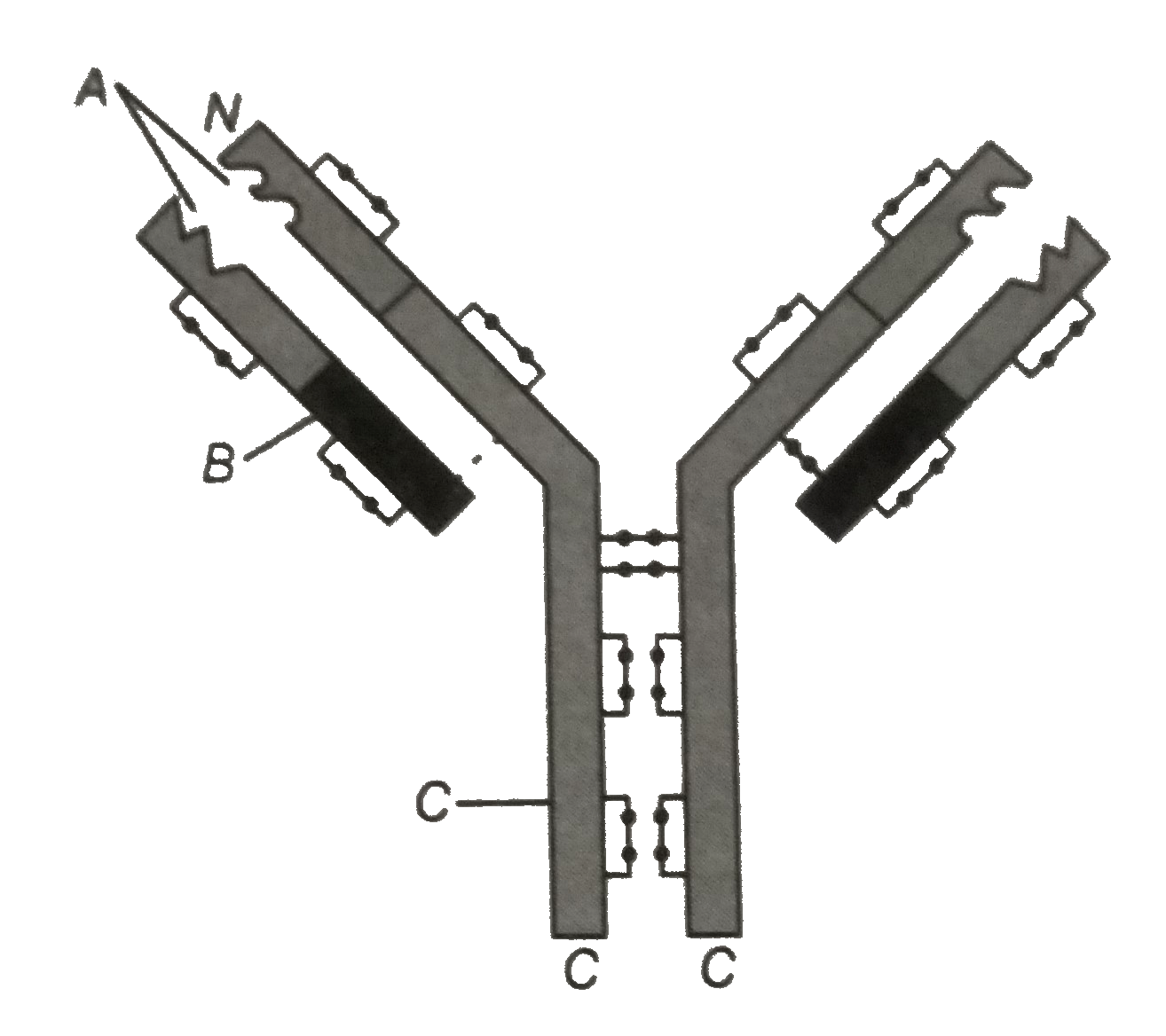Explain the structure of a typical antibody molecule.
Video Solution
Text Solution
Structure of antibody : Antibodies are glycoproteins which are highly specific to specific antigens. They are also known as immunoglobulins (Igs). Antibodies are produced by plasma cells which in turn are formed by B-lymphocytes. The plasma cells produce about 2000 molecules of antibodies.

Antibody is a .Y. shaped structure. It consists of four polypeptide chains, two heavy or H chains and two light or L chains. The four polypeptide chains are held together by disulphide Intra and inter chain bonds (-s-s-) to form a .Y. shaped structure. The region holding arms and stem of antibody is termed as hinge. Each chain of the antibody includes two distinct regions, the variable region and the constant region. Variable regions constitute the antigen-binding site. (paratope). This part of antibody recognizes and binds to the specific antigen forming an antigen-antibody complex. Since most antibodies carry two antigen binding sites, they are said to be bivalent.
|
Topper's Solved these Questions
- BIOLOGY-2016BOOK - ICSECHAPTER - BIOLOGY-2016EXERCISE - PART-II ( SECTION-B)
9 Videos
- BIOLOGY -2017BOOK - ICSECHAPTER - BIOLOGY -2017EXERCISE - PART-II ( SECTION-C)
11 Videos
- BIOTECHNOLOGY : PRINCIPLES AND PROCESSESBOOK - ICSECHAPTER - BIOTECHNOLOGY : PRINCIPLES AND PROCESSESEXERCISE - COMPETITION CORNER (ASSERTION AND REASON TYPE QUESTIONS)
7 Videos
Similar Questions
Knowledge Check
Which of the following statements is incorrect regarding the structure of a typical bacterial cell?
ACell possess naked circular DNA which is folded to form nucleoid.BCell are surrounded by a peptidoglycan cell wall and a mucilaginous sheath.CCells possess well developed membrane bound cell organelles.DRibosomes in these cells are 70S is nature.How many variable segments are present in the basic structure of antibody molecules?
AOneBTwoCThreeDFour
Explain the structure of Paramecium.
View SolutionExplain the fine structure of a striated muscle.
View SolutionExplain the structure of cilia and flagellum.
View SolutionAntibody is
View SolutionIn the figure, structure of an antibody molecule is shown. Name the parts A, B and C.

View SolutionIn the figure, structure of an antibody molecule is shown. Name the parts A, B and C.

View Solution
